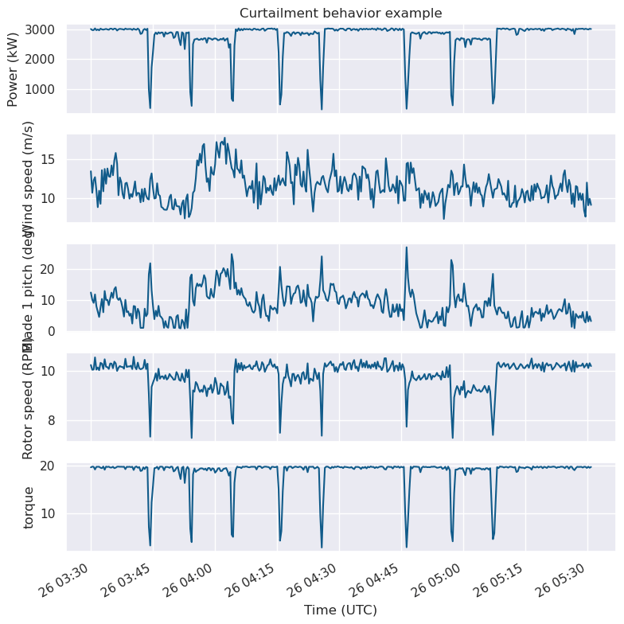Understanding high-frequency oscillations in power issue check
What is the purpose of the turbine issue check?
This issue check reviews the behavior of the turbine during curtailment events and identifies unexpected drops in power during transitions from one power level to another
What does this look like / How do you identify this issue?
- This issue was identified by finding the power outliers in which the turbine drops to nearly zero power and then quickly recovers.
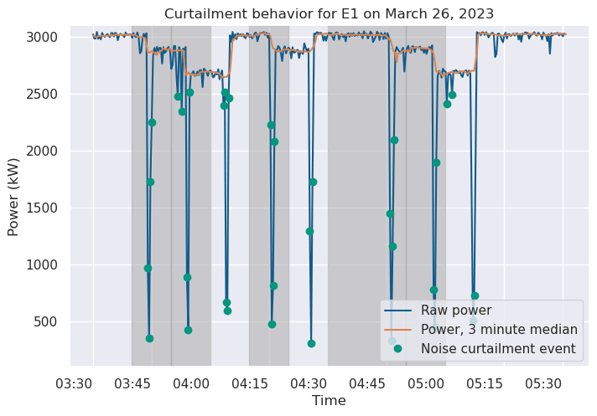
- In this manifestation, the power drops significantly whenever the curtailed power level changes. Rather than change to the target level, the turbine appears to begin a shutdown procedure before recovering and reaching the target power level.
- This unexpected drop takes about 1 minute to complete the cycle of drop and recover.
Can you see this in the power curve or a 10-min data?
- It is not possible to see this in 10 minute data because the impact is typically 1-4%, and, when reviewing event logs, the curtailment event may be noted, but the target power is not identified. It is impossible to determine if the turbine is performing to the expected curtailed power level without that information
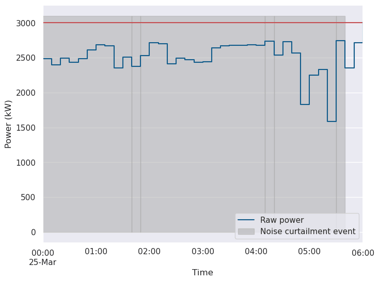
Whereas in the high-frequency data we see:
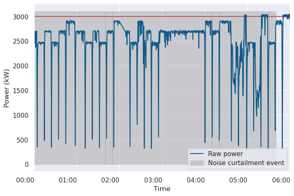
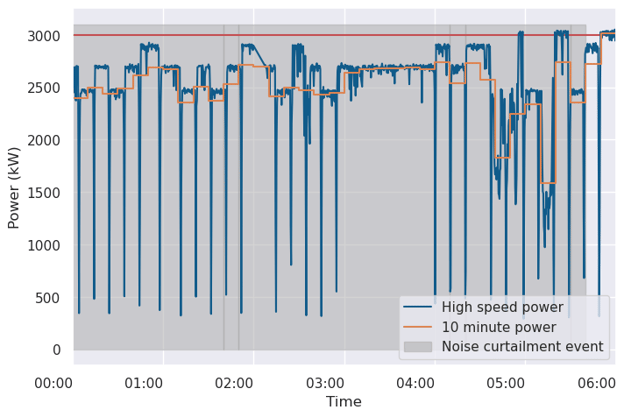
Similarly if we look at the power curve for 10 minute data and “corrected” power curve (3 day curve) it would be quite difficult to identify this issue:
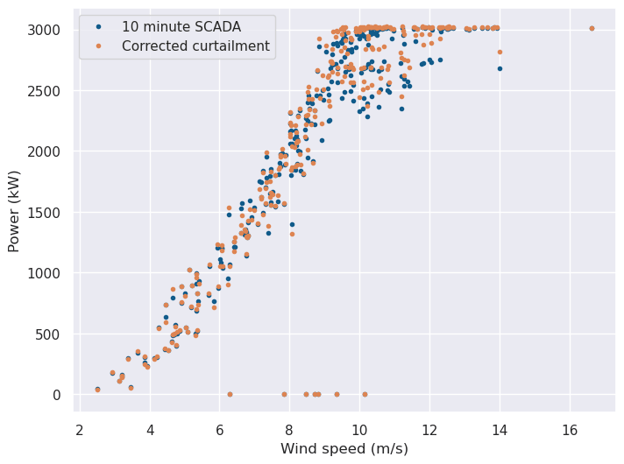
How can you tell the issue is corrected?
- This issue will be corrected when the power does not have these significant power drops and follows a power behavior similar to the orange line in the plot above.
- Confirming the issue has been resolved will require again reviewing the high frequency data since the issue is difficult to see in the 10-min data (either power curve or time series).
Looking in a little more detail
For those of you who may be curious, here is a little more detail in the turbine signal behavior at the time shown in the examples above:
